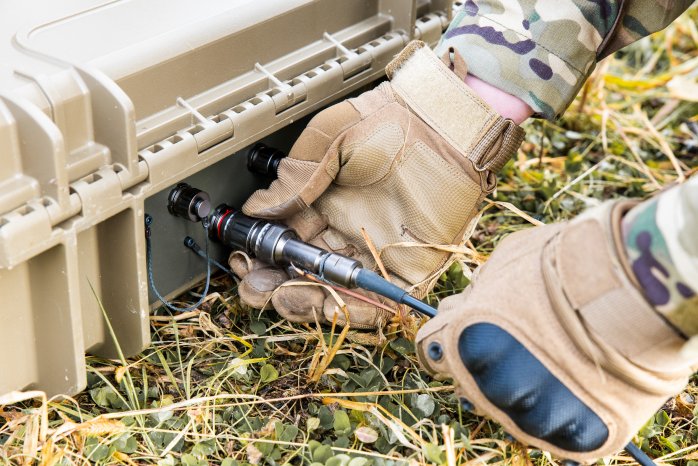The synchronization, consolidation, and distribution of the collected data often takes place in specially equipped vehicles as well as container systems that can be quickly relocated. These systems allow the creation of infrastructure for emergency services within a very short time, even in the most remote regions. Mobile command posts or FOBs (forward operating bases) require scalable solutions with reliable data, signal, and power connections. Suppliers who can respond flexibly to this need are at an advantage.
As a partner with more than 80 years of experience in the production of connection solutions and cable assemblies, ODU offers an interface that is easy to use, extremely robust, and scalable. It is specifically designed for users and manufacturers of military vehicles and their subsystems.
The Expanded Beam Performance version of the ODU AMC® Series T is an advanced fiber-optic solution that ensures high-end transmission characteristics over a high number of mating cycles. Its excellent optical performance remains unchanged even when subjected to mechanical stress and harsh environmental conditions. This solution combines the advantages of a conventional expanded beam solution, such as insensitivity to dirt, scratching, and vibration, with the high-performance attenuation values of a physical contact (<0.3 dB). Compared to conventional expanded beam technologies, it allows three to four times the number of glass fibers to be integrated in the same space. Accordingly, the number of interfaces and overall footprint are reduced, while the transmission capacity is increased by a factor of four.
The new ODU AMC® Series T offers numerous advantages thanks to its innovative 3-in-1 locking mechanism with separately sealed electrical and mechanical components. Depending on the connected subsystem, the user can select the appropriate locking variant (break-away, push-pull or thread-lock). The reliability and flexibility of these connector systems – combined with their weight savings, robustness and ease of handling – can be critical survival factors in extreme cases, as can the secure transmission of high data volumes.



